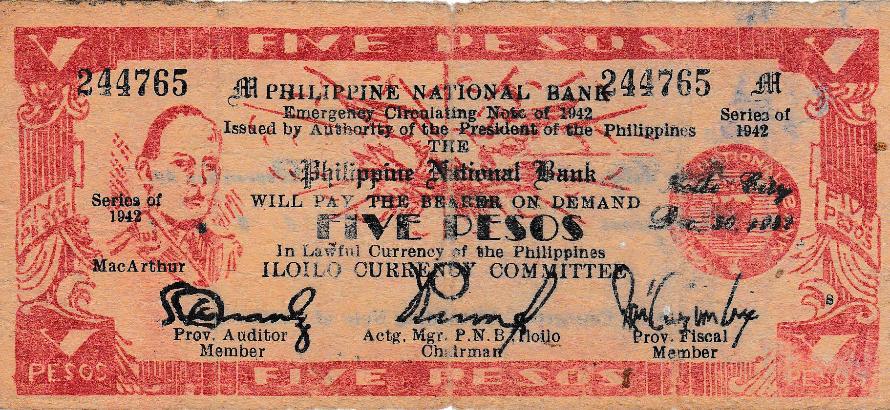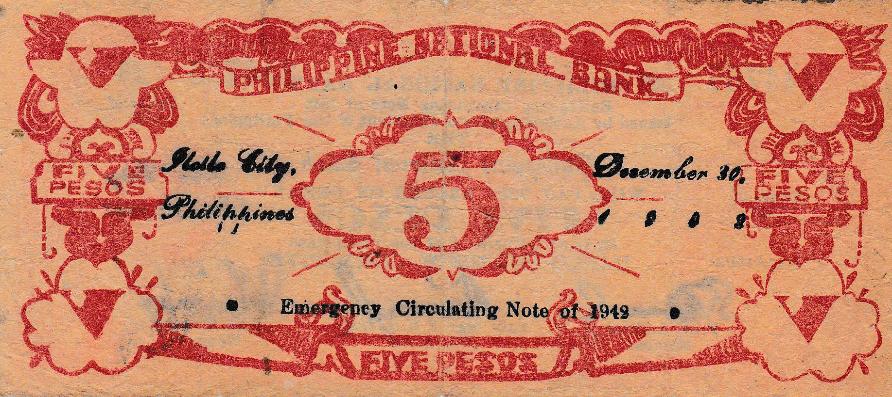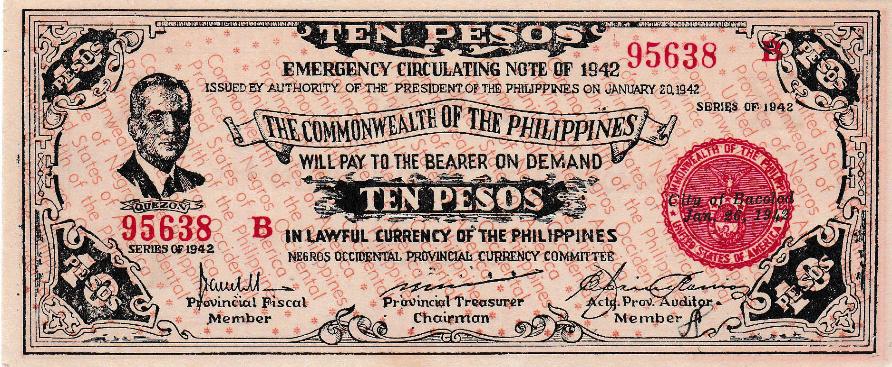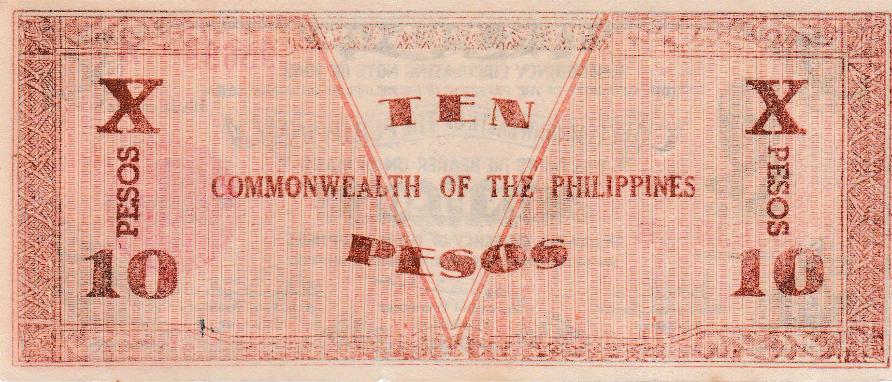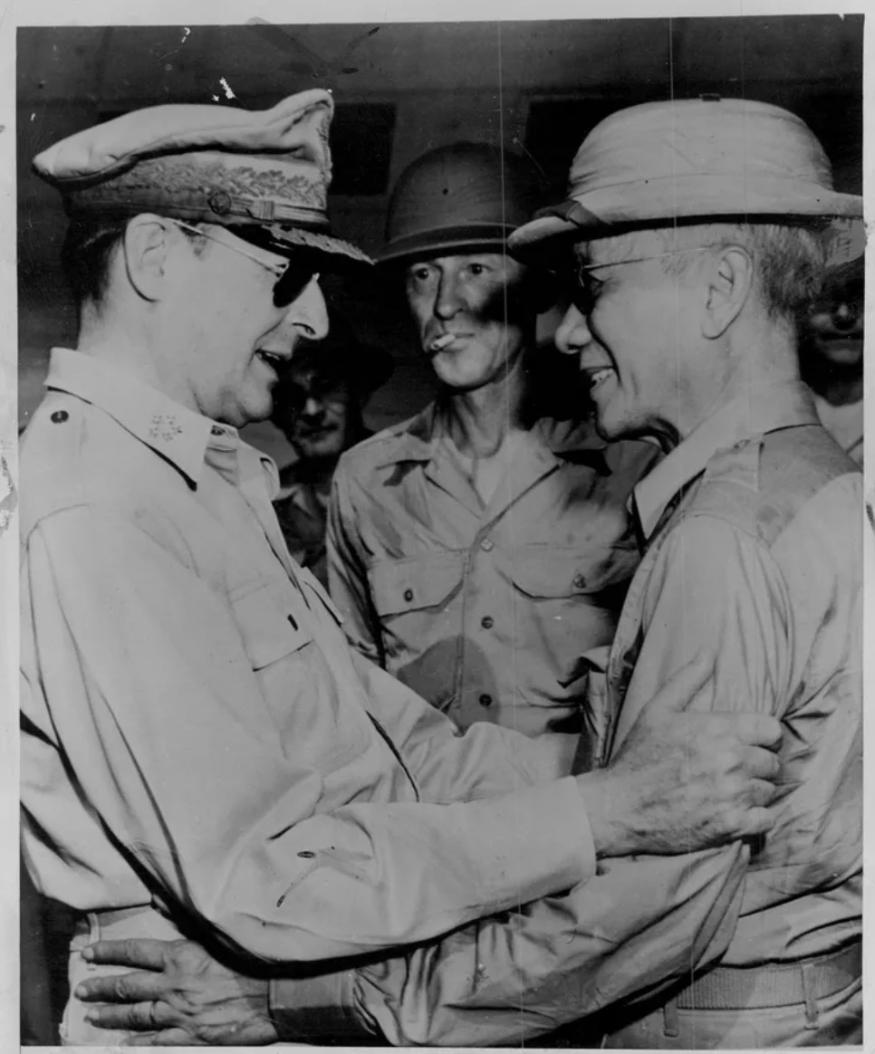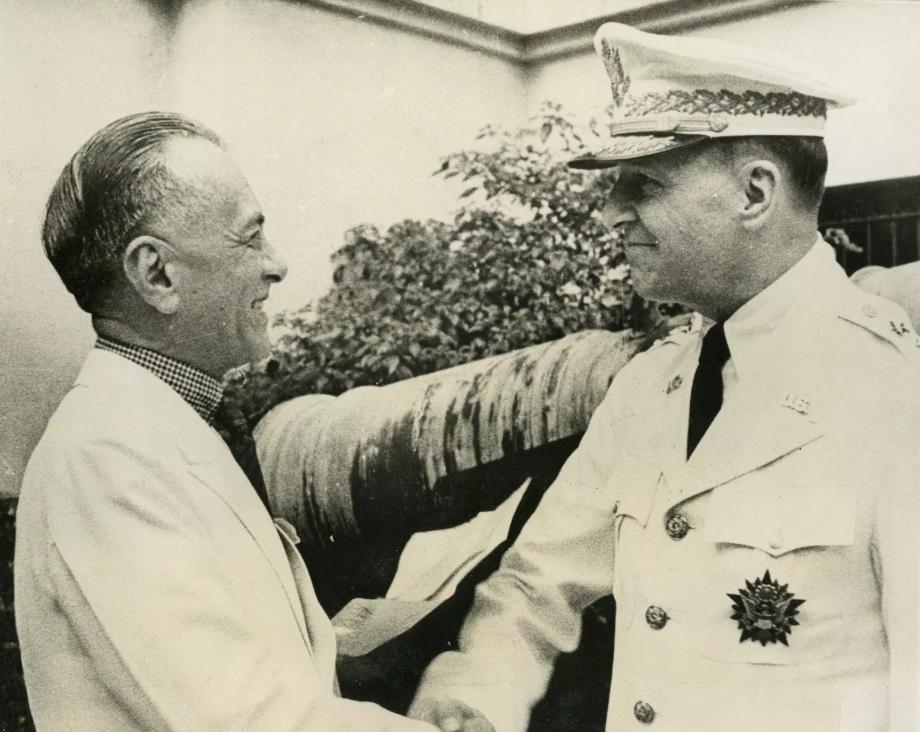MacArthur Endorses Filipino Guerilla Leader Tomas Confessor For Post, 1945
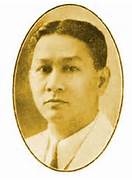
Sergio Osmena was a Filipino statesman, founder of the Nationalist Party and President of the Philippines from 1944 to 1946. After the Japanese invaded the Philippinesin 1941, Osmena went into exile in Washington, D.C. until the war ended. Tomas Confesor was Governor of his native province, Iloilo, when the war started. The Japanese occupiers asked him to participate in their occupation government. Instead he fled into the jungle to become a leader of the guerilla resistance movement fighting the enemy occupiers, writing a secretly-circulated letter in which he said "I would be surrendering something more precious than life itself, the principles of democracy and justice and the honor and dignity of our people." Confesor emerged from the war a hero and patriot. Osmena then appointed him Minister of Interior in the re-installed Philippine Government.
This letter was written by Confesor on February 19, 1945 to President Osmena recommending that a Lt. Colonel Chioko, recently released from the notorious Japanese prison, Camp O'Donnell, be appointed to head up the civil administration in the province of Nueva Ecija. He says that Chioko is a loyal Filipino who also refused to accept a position under the Japanese. Since the Philippines were still under the authority of General MacArthur's South-West Area, Osmena forwarded Confesor's request on to MacArthur for approval. MacArthur then sent it on to the U.S. Army Chief of Staff with the handwritten comment, "Urgent! To Gen. Marshall, MacA" Purchased from the Estate of the late General LeGrande Diller.
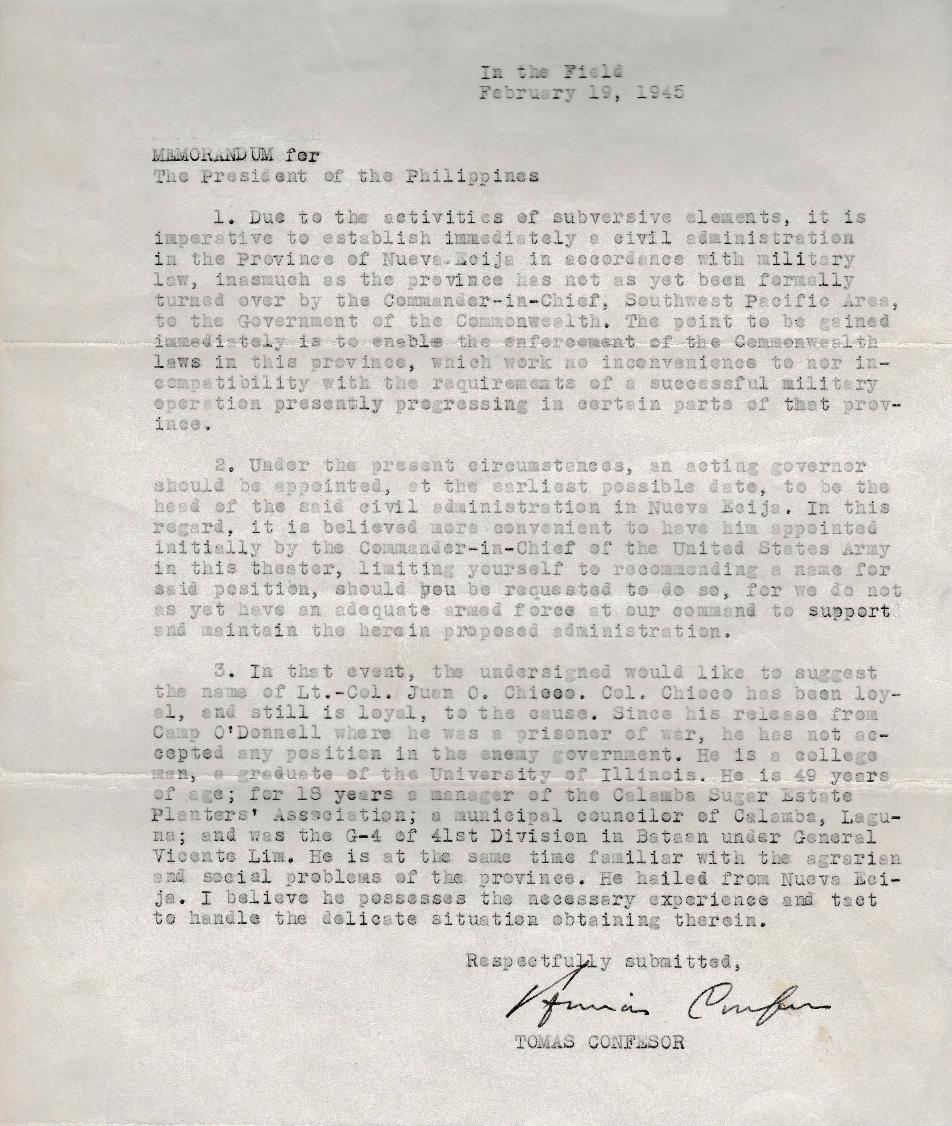
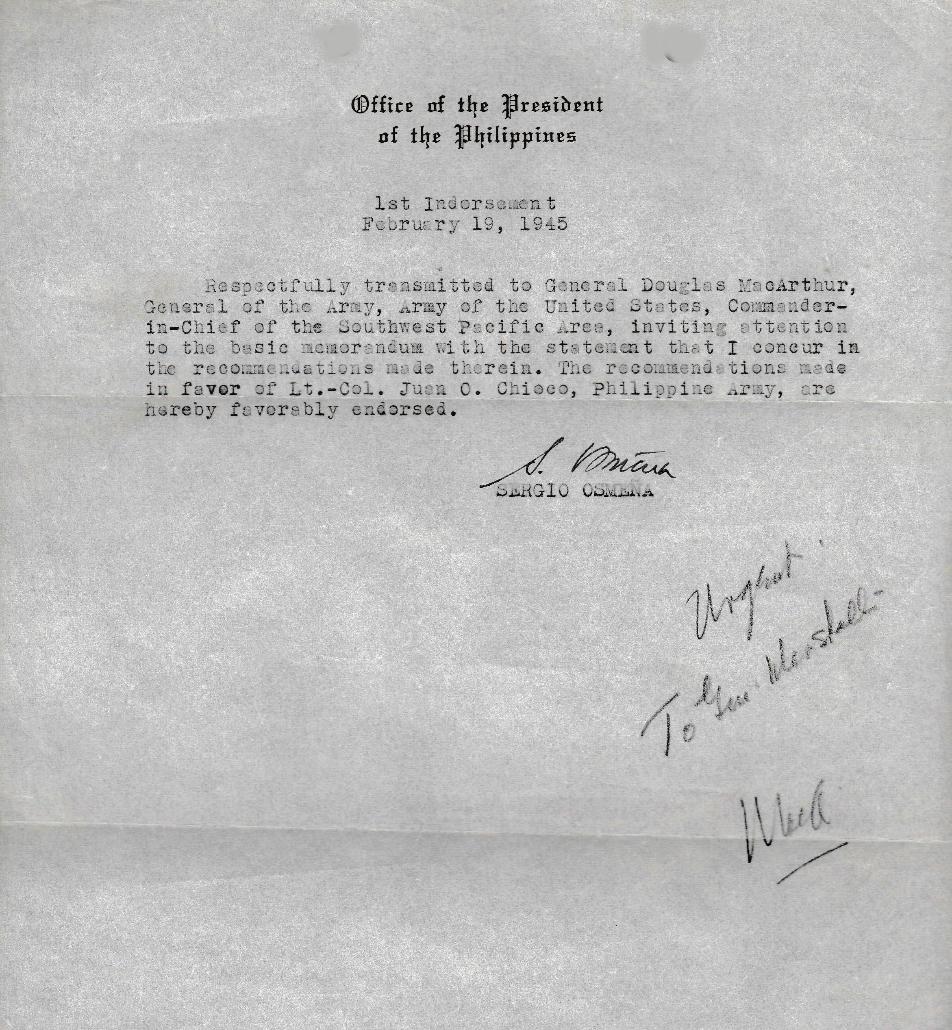
As a result the war, in 1941 currency for the Philippines from the U.S. was basically cut off. In dire need of a circulating currency, President Quezon (later replaced by President Osmena after his death), authorized the establishment of emergency currency boards in the provinces to print notes, with most of the currency being produced while the Philippines was under Japanese occupation. These notes served as tangible symbols of resistance and eventual victory. Yet there were perils in circulating the notes, as the Japanese sometimes tortured and killed those caught with such notes in their possession. The first image is a 5-peso note, featuring an image of General MacArthur, was issued by Iloilo, the largest province on Panay, occupying the southeast part of the island and also including the nearby island of Gulmaras. This is the area where the guerilla leader Tomas Confesor (in the letterscited above) and his fighters battled the Japanese during the war. The second image, a 10-peso note, features the image of President Osmena and was circulated in the Negros Occidental Province in 1942.
